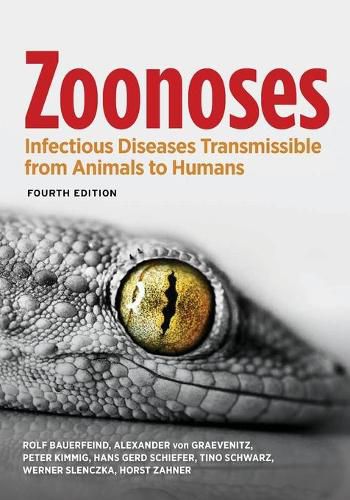Readings Newsletter
Become a Readings Member to make your shopping experience even easier.
Sign in or sign up for free!
You’re not far away from qualifying for FREE standard shipping within Australia
You’ve qualified for FREE standard shipping within Australia
The cart is loading…






Zoonoses are a persistent threat to the global human health Today, more than 200 diseases occurring in humans and animals are known to be mutually transmitted. Classical infectious diseases, such as rabies, plague, and yellow fever, have not been eradicated despite major efforts.
New zoonotic diseases are on the increase due global conditions such as overpopulation, wars, and food scarcity, which facilitate human contact with rodents, stray animals, and their parasites. In addition, humans are unwittingly becoming accidental hosts and new links in an infectious chain by engaging in activities such as survival training, which involves camping in open areas and consumption of raw or insufficiently cooked food. Zoonotic infections cause a variety of symptoms that often do not provide clear evidence of a known disease. Zoonoses, Fourth Edition, describes most occurring worldwide zoonosis and facilitates the identification, diagnosis and treatment of zoonotic infections. Written by a team of doctors, medical microbiologists and veterinarians, this completely, revised edition covers all aspects of the epidemiology and prevention of zoonotic diseases through clear descriptions of various illnesses. Specifically, this fourth edition covers zoonosis caused by
viruses, bacteria, fungi and parasites infections caused by animal bites infections and intoxications by animal foods Iatrogenic transmission of zoonotic pathogens
Zoonoses is an indispensable reference for clinicians and laboratorians.
$9.00 standard shipping within Australia
FREE standard shipping within Australia for orders over $100.00
Express & International shipping calculated at checkout
Stock availability can be subject to change without notice. We recommend calling the shop or contacting our online team to check availability of low stock items. Please see our Shopping Online page for more details.
Zoonoses are a persistent threat to the global human health Today, more than 200 diseases occurring in humans and animals are known to be mutually transmitted. Classical infectious diseases, such as rabies, plague, and yellow fever, have not been eradicated despite major efforts.
New zoonotic diseases are on the increase due global conditions such as overpopulation, wars, and food scarcity, which facilitate human contact with rodents, stray animals, and their parasites. In addition, humans are unwittingly becoming accidental hosts and new links in an infectious chain by engaging in activities such as survival training, which involves camping in open areas and consumption of raw or insufficiently cooked food. Zoonotic infections cause a variety of symptoms that often do not provide clear evidence of a known disease. Zoonoses, Fourth Edition, describes most occurring worldwide zoonosis and facilitates the identification, diagnosis and treatment of zoonotic infections. Written by a team of doctors, medical microbiologists and veterinarians, this completely, revised edition covers all aspects of the epidemiology and prevention of zoonotic diseases through clear descriptions of various illnesses. Specifically, this fourth edition covers zoonosis caused by
viruses, bacteria, fungi and parasites infections caused by animal bites infections and intoxications by animal foods Iatrogenic transmission of zoonotic pathogens
Zoonoses is an indispensable reference for clinicians and laboratorians.